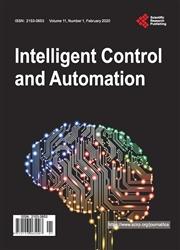Tensor-Centric Warfare V: Topology of Systems Confrontation
引用次数: 1
Abstract
In this paper, as a new contribution to the tensor-centric warfare (TCW) series [1] [2] [3] [4], we extend the kinetic TCW-framework to include non-kinetic effects, by addressing a general systems confrontation [5], which is waged not only in the traditional physical Air-Land-Sea domains, but also simultaneously across multiple non-physical domains, including cyberspace and social networks. Upon this basis, this paper attempts to address a more general analytical scenario using rigorous topological methods to introduce a two-level topological representation of modern armed conflict; in doing so, it extends from the traditional red-blue model of conflict to a red-blue-green model, where green represents various neutral elements as active factions; indeed, green can effectively decide the outcomes from red-blue conflict. System confrontations at various stages of the scenario will be defined by the non-equilibrium phase transitions which are superficially characterized by sudden entropy growth. These will be shown to have the underlying topology changes of the systems-battlespace. The two-level topological analysis of the systems-battlespace is utilized to address the question of topology changes in the combined battlespace. Once an intuitive analysis of the combined battlespace topology is performed, a rigorous topological analysis follows using (co)homological invariants of the combined systems-battlespace manifold.张量中心战V:系统对抗的拓扑结构
在本文中,作为对张量中心战(TCW)系列[1][2][3][4]的新贡献,我们通过解决一般系统对抗[5],将动力学TCW框架扩展到包括非动力学效应,这种对抗不仅在传统的物理空中-陆地-海洋领域进行,而且同时在多个非物理领域进行,包括网络空间和社交网络。在此基础上,本文试图使用严格的拓扑方法来解决一个更一般的分析场景,以引入现代武装冲突的两级拓扑表示;在这样做的过程中,它从传统的红蓝冲突模型扩展到红蓝绿冲突模型,其中绿色代表作为活跃派系的各种中立元素;事实上,绿色可以有效地决定红蓝冲突的结果。场景各个阶段的系统对抗将由非平衡相变来定义,非平衡相变表面上以突然的熵增长为特征。这些将显示出系统作战空间的底层拓扑结构变化。利用系统作战空间的两级拓扑分析来解决组合作战空间中的拓扑变化问题。一旦对组合作战空间拓扑进行了直观分析,就可以使用组合系统作战空间流形的(共)同调不变量进行严格的拓扑分析。
本文章由计算机程序翻译,如有差异,请以英文原文为准。
求助全文
约1分钟内获得全文
求助全文

 求助内容:
求助内容: 应助结果提醒方式:
应助结果提醒方式:


